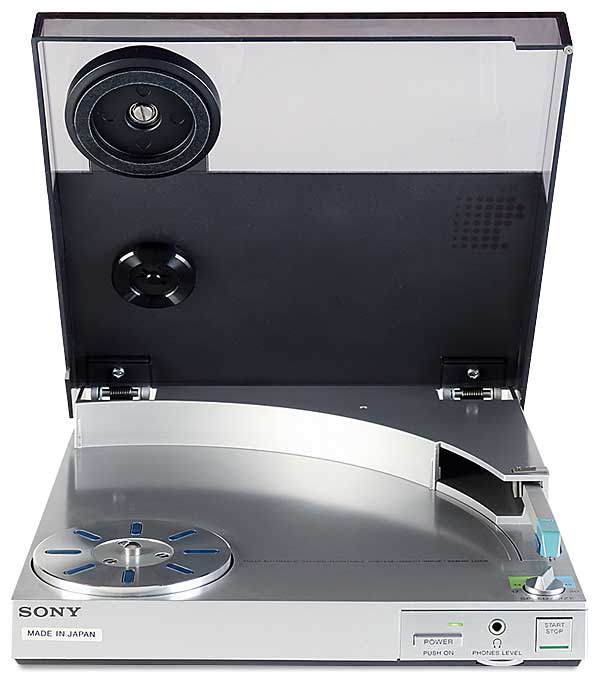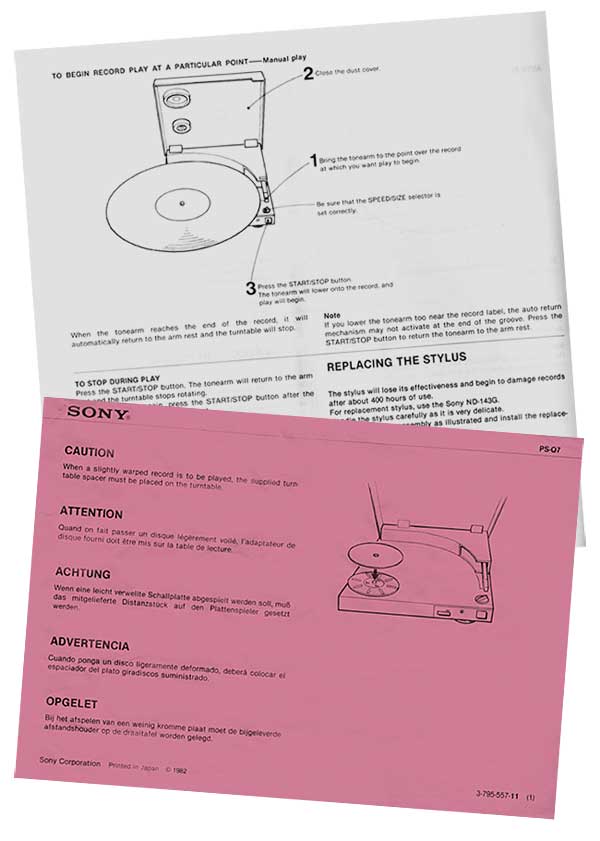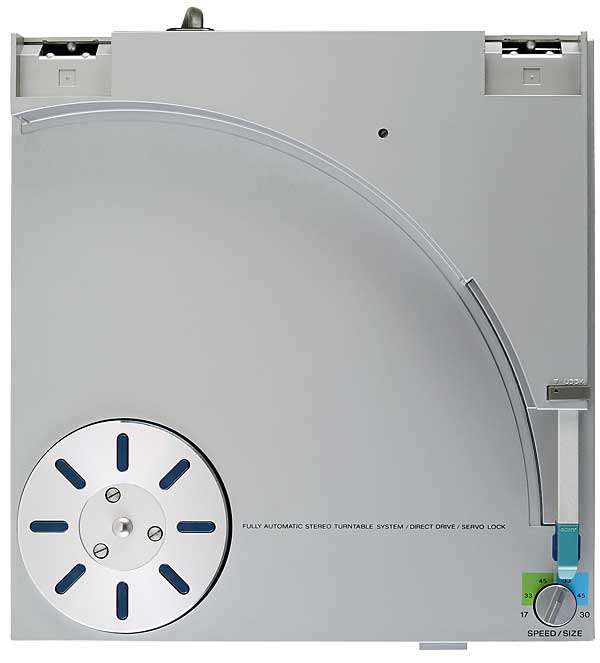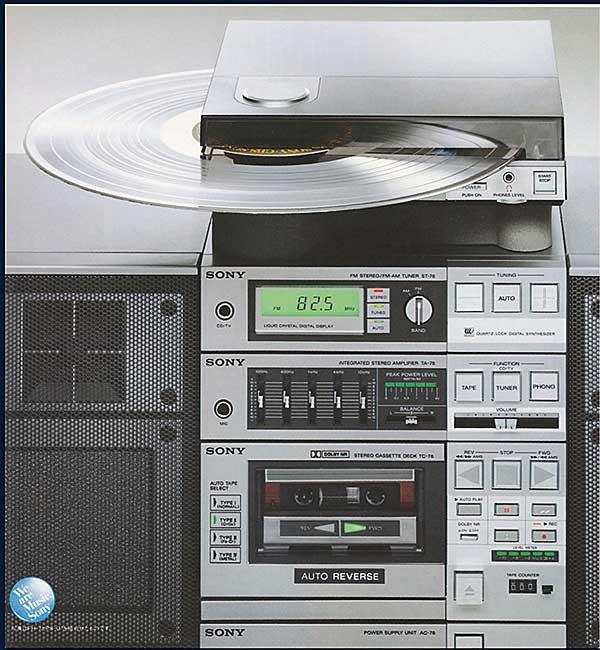Sony PS-Q7 Turntable Page 2
Something else contrary to traditional turntable design practice is that the record is only supported at its centre. Although unusual, there were some full-sized turntables from the era that supported their LPs on patterns of pegs or pods rather than over the disc's full surface using a felt or rubber mat.
![]() Tim Listens
Tim Listens
Unlike many direct drives, the PS-Q7 does not spin up to speed instantly. Instead, the motor lumbers into life, its torque more akin to a pirouetting ant than a rotating planet. Nevertheless, once up to speed it gives a subjectively stable sound, provided the record being played has no warps. The Sony PS-Q7's sound quality is surprisingly good given its small size. The supplied cartridge is of reasonable quality and this, combined with the accuracy of the motor, shows this miniature is not just a novelty.

Playing the title track of Judie Tzuke's Welcome To The Cruise [Rocket Record Company PRICE 76] revealed a sound that although a little bright, was spacious and brisk. The instrumentation retained its immediacy, which some richer-sounding turntables can smear over; it's a type of presentation that firsts grabs and then retains the attention. The novel arm design works well, although its shortcomings are apparent in both limited bass extension and a rather shallow soundstage as there is little in the way of front-to-back depth.
A bigger disappointment, however, was a lack of smoothness to the presentation, a quality which differentiates a really good turntable from one less accomplished. Vocals, in particular, can take on an edgy quality when played on the PS-Q7, even though the tracking performance of the cartridge appears to be reasonably secure.
Bang On Target
Playing the outermost track of an LP is a tough test for a turntable such as this. With a 7in single it fared much better, there being a more rigid surface under the stylus and less disc area to pick up room vibrations. Chris de Burgh's 'Don't Pay The Ferryman' [A&M AMS8256] sounded arrestingly dynamic, my listening notes saying 'CD like' which, in my terms, is quite a compliment. This, of course, relates to Sony's own CD players of the same era, in particular the D-50 [HFN Jan '13] which with a good 7in pressing (a rare thing, I know) the PS-Q7 shares its basic tonal character.

With a decent (flat) record the PS-Q7 can sound taut, dry and toe-tapping, but it's an impression that soon fades if the vinyl being played is in any way sub-par. The PS-Q7 comes nowhere near to rivalling the considerably costlier Technics SL-10 in terms of sheer overall sound quality, but I suspect that was never the intention in the first place.
As an attractive device to bridge the gap between the end of the LP era and the beginning of the CD one, the PS-Q7 would have been bang on target though. Its looks would enchant any guest and it sounds more than capable enough not to disgrace itself even in critical company. The dedicated audiophile may find it wanting, but pride of ownership remains high.
Buying Secondhand
The PS-Q7 and the PS-Q3 were big sellers and many remain in circulation. Replacement styli (type ND-143G) are easy to obtain but the special cartridges are not, so ensure one is included when buying. The most common fault encountered is the inability of the deck to complete the automatic stop/start cycle, usually accompanied by a buzzing of the arm motor from inside.

This is almost always due to wear in the tiny belt that links the motor to the mechanism, but replacement is not a straightforward task. Much of the machine has to be dismantled to access it, and this includes desoldering the fine wires from the tonearm – not a task for the beginner.
The height of the platter above the plinth is critical. Adjustment is made by adding or removing shims on the turntable shaft, with a compromise setting usually the best that can be arrived at. The fault-finding method for the BSL motor is much the same as it is for any Sony turntable of this era, but issues with the Magnedisc painted layer becoming detached are not as great with the PS-Q7 as they are with the larger models.

Hi-Fi News Verdict
Probably the smallest hi-fi turntable ever made, the PS-Q7 defines the minimum volume of machinery required to play a record properly. While bettered by models just a little larger, it is still a fascinating object and a design classic. The built-in headphone amp means there are many uses for this remarkable piece of kit, although wherever you put it you will still need to find space to put your records...























































